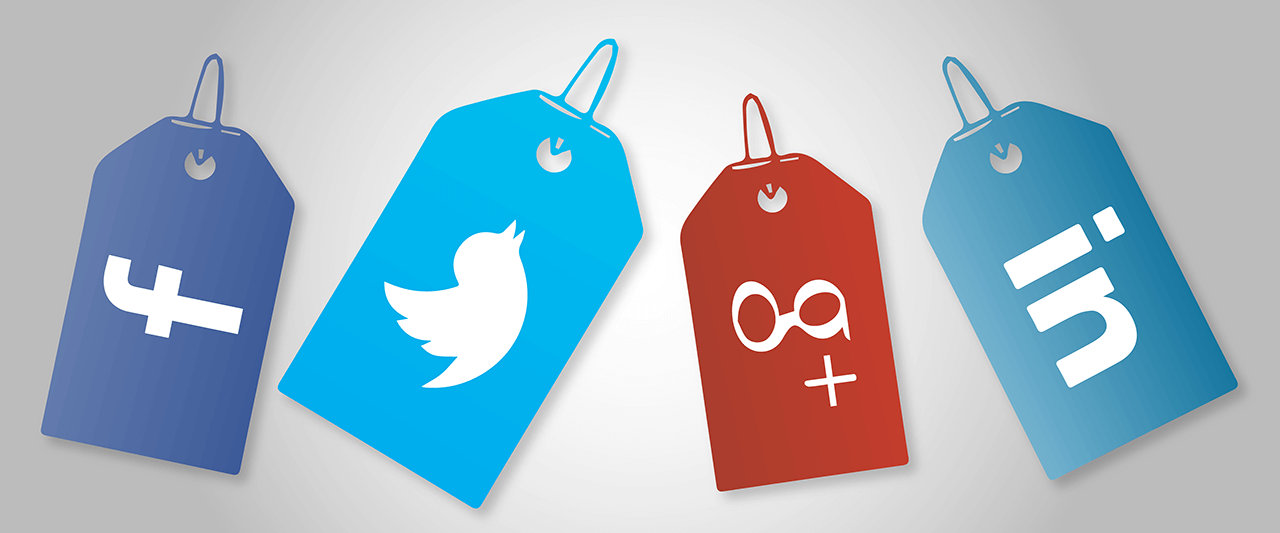-
Oct 17 2019 Important Elements Of A Good Brand Logo
Your brand’s logo is directly linked to your business’ identity – it’s the first visual impression you offer consumers, stakeholders, journalists and more. Logos can evoke powerful emotions, and, when designed right, they can communicate a brand’s true essence. Besides starting out by understanding your target audience’s preferences, how do you really pack so much into one small image? Well, here are seven elements of a great brand logo –
1. Timeless

Trends change with every passing minute. Opt for a logo that is timeless so it doesn’t become obsolete after a few months or years because rebranding is an expensive and time-consuming process. Your logo should have a long shelf-life that’s classy. Dior, Coca-Cola, Jaguar, Target, Apple, Taco Bell, Adidas, Nike, 7-11, Puma, Swarovski and Starbucks are great examples of such logos that have stood the test of time.
2. Simple

Less is more, always. Don’t confuse your audience with too many elements in one tiny logo. In fact, even if you try to go overboard, the truth is half the detailing won’t even be visible on a tiny phone screen. Marie Kondo your logo design. It’ll be more memorable.
3. Adaptable
 As your brand scales up and your marketing campaigns spread across multiple channels, you’ll need a logo that can be adapted to your Website, brochures, t-shirts, billboards, social media infographics, video clips, business cards, pens, backdrops, standees and more. Your logo should look nice even if it is super large or super small, and should look decent in black-and-white color schemes as well as full color. Select colors and fonts accordingly.
As your brand scales up and your marketing campaigns spread across multiple channels, you’ll need a logo that can be adapted to your Website, brochures, t-shirts, billboards, social media infographics, video clips, business cards, pens, backdrops, standees and more. Your logo should look nice even if it is super large or super small, and should look decent in black-and-white color schemes as well as full color. Select colors and fonts accordingly.4. Unique

Your logo should be distinct – the last thing you’ll want is for consumers to mix up your logo with another brand’s logo that looks very similar. Do enough research to avoid this blunder!5. Typography & Colors

Typography and colors emit a lot of personality and carry certain connotations. Are you looking for font and colors that convey power or nostalgia or fun or feminine appeal or youthfulness? Are the font sizes you’re selecting going to be visible in a small size or from a distance? Are the colors aesthetic? Do they communicate the right values? Will they look good on different color background? Usually, experts recommend avoiding more than 3 colors in one logo. Also, more than 3 colors in a logo will increase production cost when printing. Follow this sound advice!6. Meaningful

Your brand’s logo should be linked to your brand – there should be an interconnected meaning, rather than a sense of disjointedness. Your logo represents your brand’s vision, so make sure they are in sync. Think of tag lines that you want to include with your logo, as well.7. Balanced
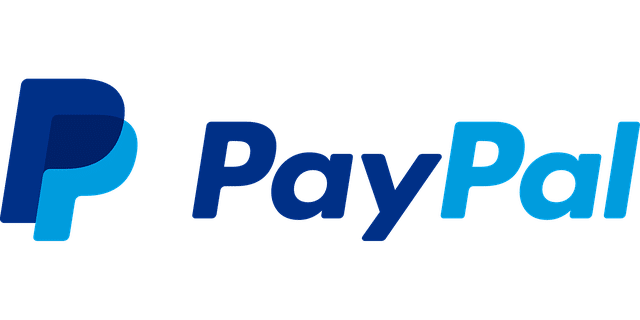
Whether your logo is only comprised of text or an icon or both, make sure all the elements are well-balanced and strong. Again, visual appeal is important – remember that. You may want to consider focus testing different logo options on a group of people to understand which one works best.We hope you’re able to develop a powerful logo for your business with this handy checklist. Remember to develop a comprehensive creative brief for your design team to avoid unnecessary back-and-forth and confusion. If you need any help with branding, don’t hesitate to contact our team right here.
Sources-
> www.logomaker.com/blog/2017/10/03/the-5-fundamental-branding-elements-of-logo-design/
> www.crowdspring.com/blog/create-a-successful-logo-with-these-10-essential-elements/
> https://blog.hubspot.com/insiders/logo-design-tips
> www.webdesignerdepot.com/2009/06/12-essential-rules-to-follow-when-designing-a-logo/ -
Oct 04 2019 6 Reasons Your Brand Should Send Newsletters
According to the Radicati Group, more than 34% individuals use email worldwide, with nearly 196 billion emails being sent on a daily basis, out of which 109 billion – the vast majority – are business emails. A 2013 study by Custora also indicates the popularity of email marketing – it quadrupled within four years preceding the study, accounting for nearly 7% of online customer acquisitions. Most importantly, statistics from Convince & Convert illustrate that 44% of email subscribers made at least 1 purchase linked to a promotional email they received, and are likely to spend 138% more than those who don’t receive newsletters. If you haven’t already integrated newsletters into your digital marketing strategy, here are six reasons why you really ought to begin! –
1. Update Busy Customers

People are extremely busy these days, and are likely to miss out on all of your updates. Newsletters are a great way to remind them of new company happenings, media coverage, endorsements and products/services, as well as promotional offers to boost sales. Your newsletter is basically a hall of fame of content within a predefined period / frequency interval.
2. Boost Sales
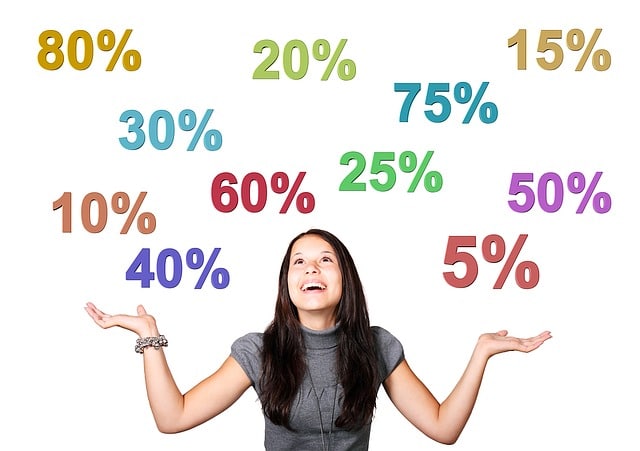
Newsletters, especially drip email campaigns, help lead customers to a particular end-goal, which can certainly be purchases. According to Experian, if you setup a transactional emailer, it is likely to receive an 8x higher open and click rate than other email campaigns. By snapshotting certain attractive offers like limited time discounts or delightful products that are hyperlinked to the sales page on your Website, newsletters are a great way to improve sales smartly.
3. Appealing ROI

According to VentureBeat and the Direct Marketing Association, email marketing generates nearly $40 per every dollar spent! This makes newsletters very inexpensive and a no-brainer for brands operating on a tight marketing budget. A joint study by Shop.org and Forrester Research indicates that 85% of US retailers consider email marketing as one of the most effective tactics to acquire customers.
4. Offer A Personal Touch

With many sophisticated tools out there in the market, newsletters can be personalized with not just the customer’s name, but even offers and information that meet their individual needs. Research from Campaign Monitor indicates segmented campaigns can increase revenue by a whopping 760% because it is more engaging.
5. Measurable Results

Rather than leaving things to guesswork, newsletters’ performance is measurable – you can see who has opened your email, how much time they spent, what links they clicked on and if they opted to unsubscribe. You can literally track which customers are more sales-ready than others, and which ones you need to spend more time and effort on.
6. Establish Trust

Newsletters help consumers and stakeholders trust you – it makes you seem as a thought leader within the industry, especially if you push out stats, research studies and trend-related blog posts from time-to-time, too, instead of only profiling new products and services. You can even highlight any events you’re participating in or awards you’re winning for an added credibility boost. Bottom-line is people like to do business with brands they can actually trust, so use newsletters to your advantage.
We hope these six reasons encourage you to incorporate email marketing into your brand’s strategy. If you need any help, don’t hesitate to contact our team of experts at Kissdoodles right here.
Sources-
> https://smallbusiness.chron.com/company-newsletter-important-68359.html
> https://smallbusiness.chron.com/importance-newsletters-business-61725.html
> https://www.saleswingsapp.com/email-marketing/why-you-should-send-out-newsletters/
> https://inboundrocket.co/blog/6-reasons-why-email-marketing-is-important-for-internet-marketing/ -
Sep 04 2019 Stay On Top Of Marketing Trends With These 10 Sites
Irrespective of what the nature of your business is, staying on top of digital marketing trends is essential because the landscape is changing with every passing day. From SEO tweaks and content hacks to social media trends and emailer optimization, there are plenty of facets to keep track of. We’ve compiled a handy list of 10 excellent blogs and Websites to follow that will keep you in the loop about all developments within digital marketing.
1. HubSpot Blog

With plenty of research studies, data analysis, insights, easy-to-process infographics and more, Hubspot’s blog is an excellent resource for all marketing professionals to uncover brand new information that can work wonders for their strategy.
2. Search Engine Land

The brand behind the Search Marketing Expo, also releases regular news surrounding important headlines, as well as in-depth analysis of trends.
3. Social Media Today

Social media presence is imperative in today’s day and age, and if you want to know the latest buzz surrounding Facebook, Twitter, Instagram, Snapchat and more, Social Media Today will keep you equipped with information ’round the clock.
4. Copyblogger

Solid content is the backbone of any digital marketing campaign, but even content writing has its own rules. Copyblogger will improve your knowledge regarding everything that has to do with copy, although it might not be as regularly updated as other portals on this list.
5. Neil Patel

Previously known as the KISSmetrics blog, New York Times best-selling author, Neil Patel shares in-depth insight surrounding email marketing, paid promotions, content marketing, SEO and more on this platform, and pretty much all of his claims are backed with robust data. Highly recommended!
6. Buffer
 If your main priority is timely insights surrounding the hottest news within the world of social media, Buffer is your go-to site. Added bonus – they aren’t afraid to tell it like it is and raise a few eyebrows in the process.
If your main priority is timely insights surrounding the hottest news within the world of social media, Buffer is your go-to site. Added bonus – they aren’t afraid to tell it like it is and raise a few eyebrows in the process.7. Moz

One of the most well-known sources within the digital marketing arena, Moz’ in-depth content covers plenty of topics and sub-topics, alike, especially surrounding SEO. You’ll also enjoy their Whiteboard Friday videos – very helpful!
8. Social Media Examiner

Social Media Examiner is a useful site to consult because they don’t just report news, they equip you with tips on how to implement their information into your campaigns. Begin your day by browsing through their hottest headlines.
9. Search Engine Watch

If something’s brewing within the digital marketing domain, chances are Search Engine Watch has reported it in a timely manner. And, they provide tons of how-to articles to improve your marketing game.
10. Search Engine Journal

The growth Search Engine Journal has demonstrated over the past few years, in terms of the amount of content they churn out, is impressive. Furthermore, they host helpful events, including the SEJ Summit, and are even the brains behind the Marketing Nerds podcast.
We hope these ten blogs help you align your digital marketing efforts with best practices throughout the year. If you need any help with content creation or content marketing, don’t hesitate to contact our team right here.
Sources-
> www.wordstream.com/blog/ws/2016/01/05/marketing-news
> www.bluefountainmedia.com/blog/the-10-best-digital-marketing-blogs-you-should-be-reading
> https://medium.com/elfsight-blog/best-digital-marketing-blogs-2019-61413063985 -
Aug 26 2019 Why Blogging Is Important For Your Brand
As consumers spend more and more time online, making your presence felt on the Web is increasingly important. While active social media accounts and emailers are great tactics, maintaining an official blog for your business is also integral. In fact, Research indicates that 80% of companies blogging as part of their key marketing strategy acquired customers through this tactic. Furthermore, and 82% claim blogging is imperative to their business. Here are seven reasons why your brand should blog –
1. SEO Boost
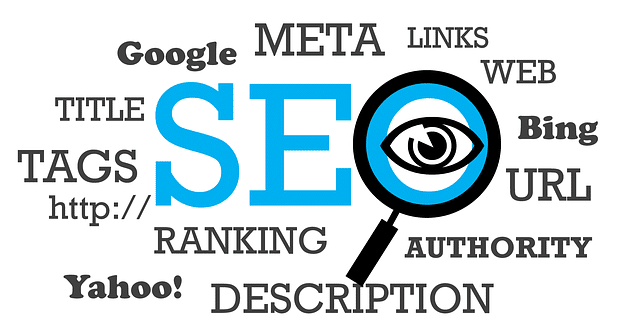
Search engines like Google, Yahoo and Bing love Websites that provide them with fresh content to index. Maintaining a blog allows you to churn out content that adds value to your consumers’ lives and also rank higher on targeted keywords. It’s like killing two birds with one stone.
2. Build Credibility

Providing audiences with new information, not just about your products, but about trends in your industry, allows you to secure an edge over your competitors – it enhances your credibility and establishes your business as a thought leader. Not just consumers, even media outlets and other stakeholders will trust your brand more.
3. Subtle Advertising
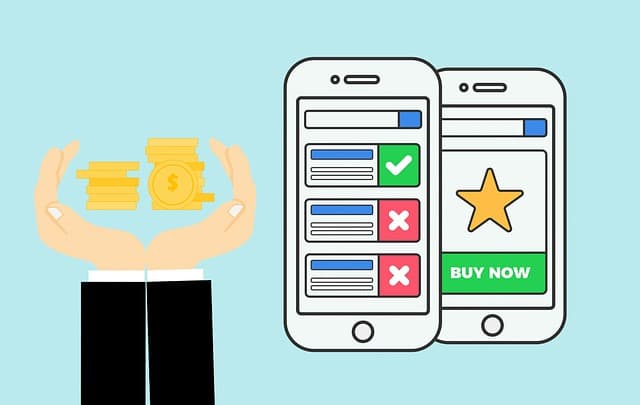
No one likes a brand that shoves products and services down a consumer’s throat. Instead, use your blog to smartly and subtly to lead your audience to a desirable action-step, gradually. For example, if you’re a brand that sells men’s t-shirts, you can post a blog about 5 hottest men’s fashion trends of the year and promote your own product images / links within the story.
4. Develop A Strong Community

Attracting a loyal consumer base is every brand’s dream. Blogging presents customers with an opportunity to engage with your brand and with one another, too. Furthermore, if your content is truly meaningful (which it SHOULD be), you might be surprised with how many people share your articles on their social media handles, offering free word-of-mout
h. In a nutshell, blogging allows you to strengthen your relationship with existing consumers and also attract new ones in the process.
5. Tap Into Influencer Marketing

If you maintain an active blog, you can appeal to influencers hrough listicle format posts that snapshot various thought leaders whom you want to tie-up with. For example, if you are a restaurant, a listicle about Top Food Instagrammers or Top Food Bloggers might just earn you a reshare from some of the people you profile.
6. Understand Your Audience

Blogging allows you to understand your consumers effectively – by monitoring which blog posts are performing best, you can find out what their wants and needs really are. Accordingly, you can tweak your messaging to control the narrative properly and feed them relevant content they wish to see, so your brand resonates with audiences even further.
7. Coveted Subscribers List

Blogging also presents you with an opportunity to build a database of consumers who are genuinely interested in your products and services – often times, if people love your blog’s content, they will subscribe for more updates, which then provides you with a golden chance to cross-promote your business even further through other touch-points.
We hope these seven reasons inspire you to either breathe life into your pre-existing blog or to add one to your corporate Website pronto! If you need any help with content creation, contact our team right here.
Sources-
> www.cbo.me/blog/5-powerful-benefits-of-blogging-for-your-small-business
> www.prismglobalmarketing.com/blog/7-reasons-why-blogging-is-important-to-your-business
> https://socialmediaweek.org/blog/2018/01/brand-needs-blog/
> https://blog.hubspot.com/marketing/the-benefits-of-business-blogging-ht -
Aug 23 2019 Does Your Website Have These 11 Essentials?
We’ve already taken a close look at why every brand needs a Website in today’s day and age when competition is cut-throat and maintaining a strong digital footprint is imperative. However, not anything and everything will make do. In fact, there are eleven important elements that make a Website robust. Let’s take a look at all of them right now, shall we?
1. Be Clear

Customers who happen to stumble across your Website shouldn’t be confused about what it is you exactly do, else they are going to bounce off your platform immediately, and that’s going to lower your SEO performance . Make sure there is a crystal clear description that is short and sweet about your products/services – and, it should be super easy to spot.
Pro Tip – Your Website should have a clear call-to-action, as well!
2. Site Map
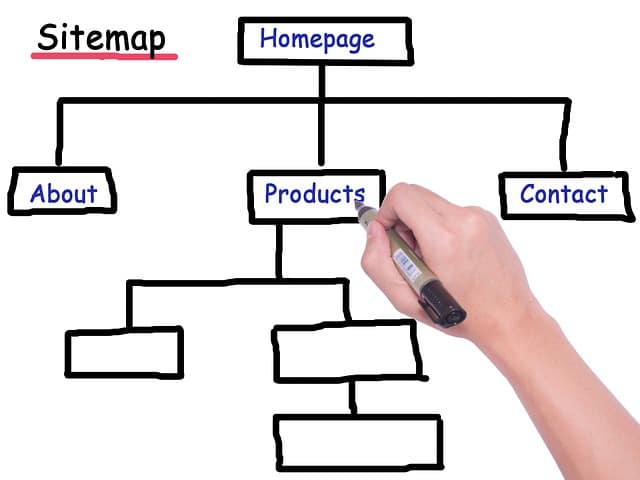
A site map is an important element to include on your Website, even if there aren’t too many pages. It helps users navigate your site smoothly and look at all the sections + subsections in one convenient place, in case they are having difficulty finding something. Do not miss this component!
Pro Tip – Also add a Search Engine on your Website.
3. Straightforward URL

Do not complicate your URL – it’ll be difficult for people to remember and pass along to others. Stick to your brand’s name, and preferably .com (which is most commonly used). In essence, your URL should have high recall value.
4. Easily Contactable

Contact info. Hyperlinked social media icons. Customer service chat-box. All of these features should be easily discoverable. Nothing frustrates a customer more than having to search for a way to get a hold of you should they need help or wish to receive assistance with an order / query.
5. Credibility Boosters

Testimonials. Reviews. Awards. Media coverage. Portfolio / case studies. Prestigious client tie-ups. Endorsements. Display your “social proof” proudly to boost your credibility. This works as a charm in swaying customers / clients in your direction over your competitors.
6. Smart Design

High-quality content User-friendly design. Mobile-friendly navigation. Stunning visuals. Hero shots. Smart headlines. Crisp sub-sections.These are all staple ingredients of any solid Website. Do not neglect these basics. If your site isn’t user-friendly, it will turn them off and impact SEO adversely!
Pro Tip – Do not forget to invest in a good logo. Microsoft Word Art is not going to cut it!
7. Appealing Offers

Convert site visitors into customers with an appealing offer they cannot resist. Are you an e-commerce portal? Offer a nice discount off first purchases upon subscription. Do you offer services to other companies? Offer a free trial of your service upon subscription.
8. Regularly Updated Blog

A blog is an important element of most Websites these days. They allow you to improve SEO. And, they also enable you to maintain your image as a thought leader. Furthermore, you can often repurpose content from your blog as social media content, killing two birds with one stone. Word of advice – do NOT turn comments off on your blog. Remember, the goal is to engage.
9. Security / Safety Measures

If users feel your Website isn’t very safe to use, they probably won’t want to make a transaction on your platform. Make sure your site is fully secure. And, if you’re dealing with customers in Europe, make sure it is also GDPR compliant.
10. Links & Tags

Don’t forget SEO basics when designing your site. Always use tags, meta-tags and try to cross-link within your Website so audiences can be redirected to co-related content and spend more time on your Website.
11. Update Regularly

Many brands forget to update their Website regularly. Just because you are current on your social media handles does not mean you can slack off on your Website. If you haven’t updated the Copyright date on your portal, that shows you’re lazy. If you haven’t updated your client roster, again, you’re showing you aren’t taking your own company’s achievements seriously. Make sure you set a date every month to update your Website properly. And, while you’re doing that, also cross-check analytics!
We hope these eleven essentials will guide you to revamp your Website so it does more for your business, moving forward. Need help with designing your Website? Contact our team right here.
Sources-
> www.entrepreneur.com/article/217499
> www.orbitmedia.com/blog/what-to-put-on-your-homepage/
> www.forbes.com/sites/forbesagencycouncil/2017/10/13/13-important-elements-to-include-when-designing-a-website/#17390c9568de
> www.poweredbysearch.com/blog/the-15-website-must-haves/ -
Aug 21 2019 Setup Low-Cost Social Media Campaigns With These 7 Tips
Social media has many advantages for businesses of all sizes, such as –
- You can boost brand awareness at a low cost.
- You can improve traffic to your Website.
- You can offer better customer service.
- You can develop brand loyalty.
- You can gain more in-depth insight into your audience and the marketplace.
- And, you can establish brand credibility.
However, if you are a startup or a one-person-show (i.e. an artist, designer, freelancer), there’s a huge possibility that you might not have a fancy budget in place to make the most of social media’s benefits. Figuring out a posting schedule, obtaining nice artwork and planning an ad budget can be intimidating. That’s why we’ve compiled a list of seven tips to help you setup a low-cost social media campaign.
1. Start With An Editorial Calendar
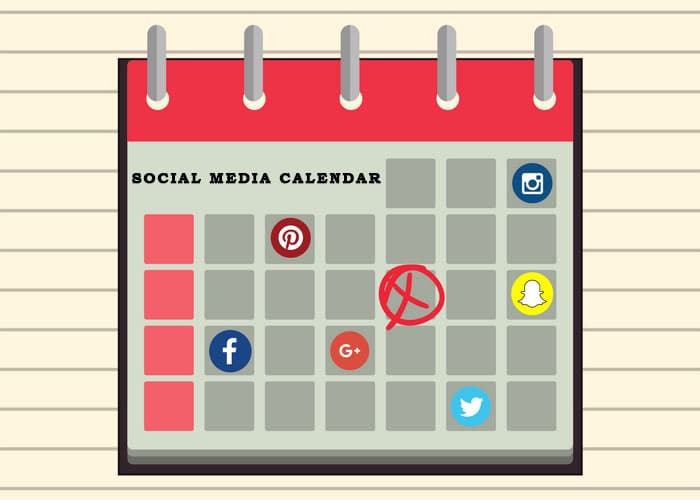
An editorial calendar will help you see how many posts you need each month, further segmented into different categories – i.e. testimonials, product shots, videos, contests, throwback/flashback posts, blog links, etc. This will be the most important step in keeping your social media campaigns low-cost – planning prevents unnecessary expenditure on unneeded posts and/or urgent last-minute creatives. Furthermore, it helps you pick which posts truly deserve a paid push-out.
2. Curate Your Content

Based on the editorial calendar you’ve formed, you can then figure out which creatives can be sourced for free through sites, such as Canva, Unsplash and Pixabay. And, you can also pin-point which creatives truly need a graphic designer to work their magic on. This will help you keep your graphic design budget to a bare minimum.
Many social media pros also emphasize the value of drawing user-generated content, too – not only do you engage with your audience base through this tactic, you also get free material. For example, you could run a contest that requires participants to take photos with your product(s) or send in a testimonial.
And, think of clever ways to repurpose existing content you have on file. Can you convert any blog posts into infographics? Can you present industry information out there in the public domain in a visually interesting way that’s easier to digest? Are there any user reviews/comments on your page you can convert to testimonials? Think, think, think!
Pro Tip – When working with graphic designers, create a mood board and detailed creative brief to minimize extra costs associated with too many revisions.
3. Tie-Up With Micro-Influencers

We’ve already looked at the benefits of working with micro-influencers in an earlier blog post. With a 7x higher engagement rate than bigger influencers, micro-influencers offer more value and sometimes even tie-up on a barter basis. Research ones suitable for your brand and collaborate!
4. Monitor Analytics

Low cost tools like Google Trends and Adwords will help you determine which content is performing best in the market, so you can make sure your social media content mix is offering audiences the right value. You can also track your Website’s analytics to see if your social media handles and ads are even redirecting customers to desired page(s).
Pro Tip – Try different content ideas and post timings to figure out what’s resonating the most with your TG.
5. Cross-Promote

This might seem fairly obvious, but you’d be surprised how often this gets overlooked. Make sure you add hyperlinked icons to your social media handles in emailers, official email signatures, your Website and whenever you guest post on other platforms, link back to your company’s social media handles, too. You might pick up more followers through this simple tip.
6. Use Ads Consistently

Simply putting great content out there doesn’t magically bring you thousands of followers. You need to invest in pushing content out so people know it actually exists. While you don’t need to spend big bucks on Facebook and Instagram ads, it is critical you chalk a small, but consistent budget to obtain more likes on your FB page and boost select posts throughout the month that are important. Learn to work your way around algorithms so your content is discovered all the time.
7. Less Is More

Lastly, be selective where you want to be. Rather than hopping onto any and every social media platform that exists, select 2-3 platforms at most that are genuinely relevant to your brand and dedicate your energy to them properly.
We hope these seven tips help you keep your costs low and campaign results high. If you need help with a social media strategy, contact Kiss Doodles right here.
Sources-
> https://neilpatel.com/blog/social-media-marketing-on-a-budget-the-4-step-approach-that-works/
> https://www.moovly.com/5-simple-low-cost-social-media-marketing-tips-for-small-businesses
> www.bluefountainmedia.com/blog/advantages-of-social-media-marketing -
Aug 19 2019 Web Design Teams From Around The World To Inspire You
The world of online marketing has become extremely competitive, especially for e-commerce portals. With everyone glued to the Internet, the importance of maintaining a solid online presence cannot be emphasized enough. You need to be where your audience is, after all. And, one of the key tactics of beating your competition is to build a visually stunning, high-content and user-friendly website that not only ranks well from a SEO perspective, but also impresses both your target audience. Here are five of the best web design companies you should definitely study to get some much-needed Web design inspiration.
1. Lounge Lizard

Winner of many awards, Lounge Lizard is a New York based team that consists of graphic designers, content writers, designers, programmers and digital market specialists. They all keep one end-goal in mind when designing a Website – the number of users must grow. Active in the market since 1998, SoftwareTestingHelp.com and WP Arena have both profiled their work, in the past. They have worked with brands such as Spectrum Entertainment, Frey Moss, Sachem Public Library, Motorola Solutions, Novus and Animalpark.
Check out their work right here.
2. Go Gulf

CEIBS. Fujifilm. Air Mauritius. Zodiac. These are just some of the very many prestigious brands Dubai-headquartered Go Gulf has helped with their Web based expertise. Founded in 2005, they have already dealt with over 500 companies! No wonder TIME, Neil Patel, CNN, Mediabistro, Techwire and more have featured them. They’re constantly up to great Web design and development.
Check out their work right here.
3. Alt Agency

UK based Alt Agency’s strengths are design, development and Web site maintenance. And, the brands they’ve worked with all fall into a really interesting mix, including F1, The Beatles Story, Bad Bear, Supercar and Concept Hair Magazine. Founded in 2006, they’ve certainly come a long way Website-by-Website.
Check out their work right here.
4. Playground

Milan, Italy sure is known for being a hip hub. And, the same goes true for Web design! Launched over 12 years ago, Playground specializes in designing digital experiences, and they handle other verticals, too, including content and email marketing. Their data-driven approach to Web design has won them some pretty high-profile clients, such as The North Face, Timberland, Vans and Napapijri.
Check out their work right here.
5. Ruckus Marketing
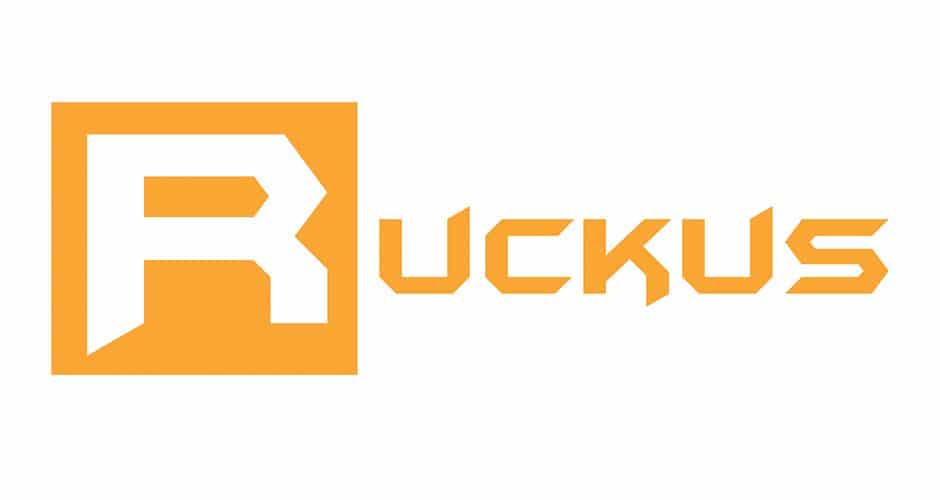
Crayola. Haley Davidson. HSBC. OnePlus. Porsche. What’s the common thread with all these brands, minus the fact that they’re huge? Well, they’ve all turned to New York based Ruckus Marketing to help with Web related solutions! Listed as one of the top design agencies by Agency Spotter, Ruckus Marketing handles UX/UI, Website development, apps, marketing, branding and much more for clients across many diverse industries.
Check out their work right here.
We hope these five design pros from around the globe help you set the bar higher for your own Web site’s design. Remember, if you don’t invest in your own brand image, no one will want to invest in you. If you need help with putting together a user-friendly site, contact our team right here.
Sources-
> https://wparena.com/top-web-designing-companies/
> www.softwaretestinghelp.com/web-design-company/
> https://yourstory.com/mystory/top-5-website-design-and-development-companies-in–r1iv2iq8vi -
Aug 02 2019 6 Tips To Score You FREE Influencer Marketing
Building a sizeable social media presence isn’t an easy process – it can take a long time and it can also be really costly. We’re pretty sure you must have heard of influencer marketing – the hottest marketing trend out there on the market right now – in fact, the influencer marketing industry is projected to touch 10 billion by 2020. Research indicates 49% consumers actually depend on recommendations from influencers, and campaigns conducted with influencers have a ROI of 6.50 for every dollar spent.
But, what if you don’t have the big bucks to tie-up with influencers? Well, that’s why we’ve decided to help you bag some FREE influencer marketing.
1. Go Micro, Not Macro

Rather than going after influencers who have hundreds of thousands of followers, opt for micro-influencers. Studies indicate micro-influencers have a nearly 7x higher engagement rate than bigger influencers. Furthermore, since micro-influencers engage in way fewer campaigns, 82% consumers have a higher chance of acting upon their recommendations. Often, a small freebie of your product(s)/service(s) are enough to have them on board, or a really small token amount will suffice.
2. Do Your Homework

If you have less followers than the influencers on your wish-list, spend some time brainstorming how you can offer them value. For example, can you give them business referrals? Can you spot issues on their Website (i.e. broken links)? Can you plug them for a feature story at a friend’s publication? Figure out what you can do for them before you ask them to do something for you!
3. Interact Selflessly

Follow. Subscribe. Like. Comment. Share. Shout-outs. Attending their events. Support causes they endorse. Praise for recent accomplishments. You get the point! Selflessly support influencers you have your eye on, so you can build a relationship, gradually. Remember, it takes time to nurture an equation like this if you’re not putting money on the table.
4. Send Them Freebies

Send a box of goodies from your product catalog, or offer a free service to influencers. If they really like it, they might just post about your brand on a day they don’t have any paid campaigns running.
5. Shine The Spotlight On Them

One of the best ways to get social media shout-outs from influencers is by featuring them in your platform. Interview them for your blog. Or, include them in a listicle of Top 10 Instagrammers Covering XYZ. Or, you can even ask them to guest post on your Website. If you promote them on your platform, they are likely to share the URL of their interview/article with their own following.
6. Be Better Than Your Competition

This goes without saying – always try your best to create content that’s more exciting and aesthetic than your competition (a social media competitor audit helps with this), and chances are influencers will feel more inclined to work with you.
We hope these 6 tips help you obtain free support from influencers. If you need help with putting together branding strategy and social media campaigns, contact our team right here!
Sources-
> www.jeffbullas.com/22-proven-tips-getting-attention-influencers/
> https://digitalmarketinginstitute.com/blog/20-influencer-marketing-statistics-that-will-surprise-you
> www.grin.co/blog/19-micro-influencer-statistics-you-must-know-in-2018 -
Jul 31 2019 Everything You Need To Know About Running Social Media Contests
There are plenty of brands vying for the attention of your particular target audience. So, how do you keep your existing followers hooked and also draw new customers to your page at the same time? Social media contests! However, not every social media contest is going to generate the same amount of brand engagement. Make the most of your resources with these seven tried and tested contest ideas that are bound to generate solid value for your company –
Why Run Contests
Running contests are helpful for a variety of reasons, including –
- It allows you to build a database of contacts to then engage through automated drip email campaigns and special promo offers
- It widens your reach to your followers’ network
- It provides you with user-generated content to repurpose in social media posts
- It enables you to generate hype surrounding your brand and/or a particular product/service
Contest Essentials

Before we get into the top ideas for running social media contests, let’s first look at six important pointers –
- Always give away something of value to your users so they actually feel motivated to participate
- Use a contest headline that is clear and catchy
- Make sure participation steps are not too complicated, else engagement will be low
- Boost contests through paid promotions (i.e. FB/Insta ads) so people actually know you’re running it
- Input all data you retrieve into a running Excel sheet to re-engage everyone with “thank you for participating” emails that offers a nice promo to lure them in for a purchase
- Consider using a branded hashtag unique for each contest to track entries smoothly and gauge contest success
Alrighty, let’s jump right into contest ideas now, shall we? –
Top Social Media Contest Ideas –
Idea 1 – Like & Comment To Win

One of the easiest social media contest methods, the “Like & Comment” tactic helps boost traction on your page immediately. And, since there are no other steps to required to enter, audiences are more likely to take part in your contest since it’s easy-breezy. The less complicated the action steps, the higher the number of entries!
Idea 2 – Event Tie Up

Tie your social media contest with a special event, cause or day to boost participation. Since people are already searching for trending event/special day hashtags, your contest is going to gain more eyeballs. If you make the stakes even higher with a much grander giveaway, you could possibly even do a PR campaign surrounding it for free media coverage.
For example, if you run a pizza shop, National Pizza Day is a great special day to tie your contest with and perhaps give 2-3 lucky winners a free pizza voucher and a chance to make the largest pizza in the city (the idea of the largest pizza in the city would appeal to local journalists + bloggers, too, since it is a feel-good, topical story!).
Idea 3 – Sharing Is Caring
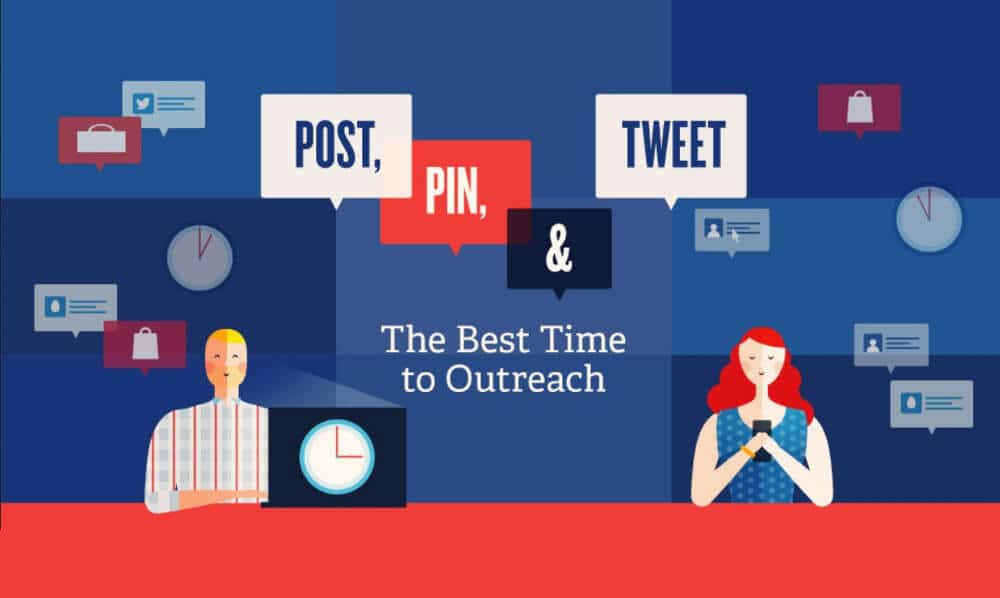
If you want to tap into your followers’ following, the Reshare/Retweet/Repost contest tactic never fails. In fact, if you tell followers every re-share/re-tweet/repost counts as a separate entry (i.e. increased odds of winning), that’ll motivate them to spread the word about your contest on all of their social media handles. This is a no-brainer!
Idea 4 – Referrals

A variation of Idea #4, instead of asking entrants to reshare/repost-retweet, you can simply ask them to repost + tag their friends or to just tag their friends in the comments section below your original contest post. This doesn’t eat away from much of their time, and it gets the word out quickly about your brand!
Idea 5 – Rep Search

A lot of subscription boxes and publishing houses love this contest idea on social media. In essence, you’re getting free influencers through this method. Offer to select 3 “reps” for your brand who will receive a box of goodies for a set number of months (provided they share a certain number of social media posts about the goodies you send them). Tell people to upload an original collage of different images relevant to your brand and to tag your company in the post. Add a clause that whoever receives the most number of likes on their collage wins.
Idea 6 – Audience Inputs

People like to participate in a contest that’s fun. “Caption this” contests that award the most-liked witty comment are a handy idea for this very reason. You can also post a clever trivia question. Or, give your followers a chance to vote on new products/services – for example, if you run a cosmetics brand, you can ask your followers to pick between two new shade options or different name options.
Idea 7 – Endorsements

If you have a set of products (i.e notebooks, clothing, jewellery, tea/coffee), you can ask followers to send in a selfie with it and/or a testimonial video to enter in your contest. This will give you plenty of user-generated content to repurpose in the future.
We hope this post has you thinking about social media contest ideas you can start implementing in your own digital marketing plan! If you need any help, contact our team right here.
Sources –
> https://johnlincoln.marketing/drive-social-engagement-26-contest-ideas/
> https://blog.hootsuite.com/social-media-contest/
> www.socialmediaexaminer.com/4-tips-for-successful-social-media-contests/ -
Jul 29 2019 Does Your Social Media Editorial Calendar Check All These Boxes
A social media content calendar is a great tool because it –
* Allows you to brainstorm new ideas and assess what is / isn’t working
* Helps you plan your SM posts well in advance
* Prevents lags in posting consistency
* Ensures your design and copy teams provide everything in a timely fashion
* Assists with digital ad budgets
* Improves metrics / analysis at-a-glance
Let’s take a look at what elements should be a part of your social media editorial calendar (only use a spreadsheet for this!) so you can plan things more efficiently –
1) Dates
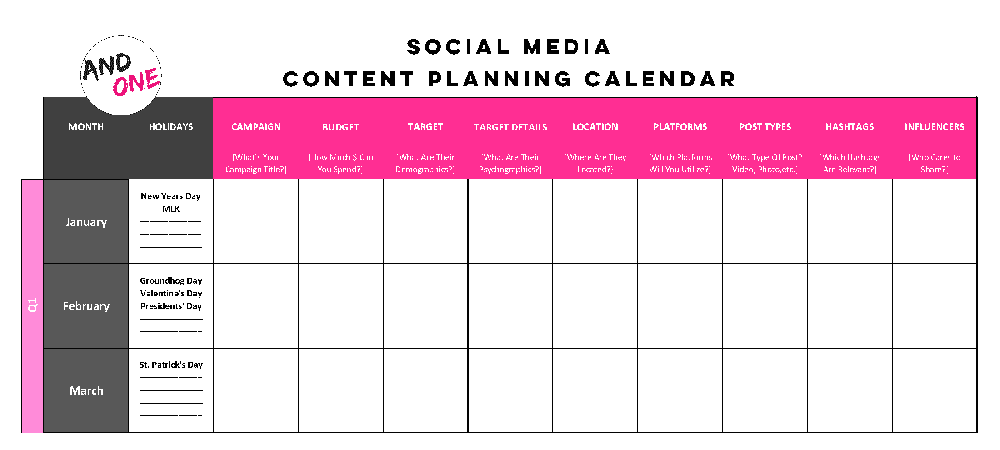
List out all the dates in the month so you can see which posts are going on what days and where the breaks are
2) Post Type

Enter a category for each post going up – i.e. photograph, video, throwback/flashback, testimonial, contest, motivational quote, infographic, etc. You can check if your content is varied enough or too tilted toward one direction (that would be monotonous)
3) Copy

Your copywriter(s) should enter the text for the graphics right here so your design team can copy + paste it easily
4) Caption
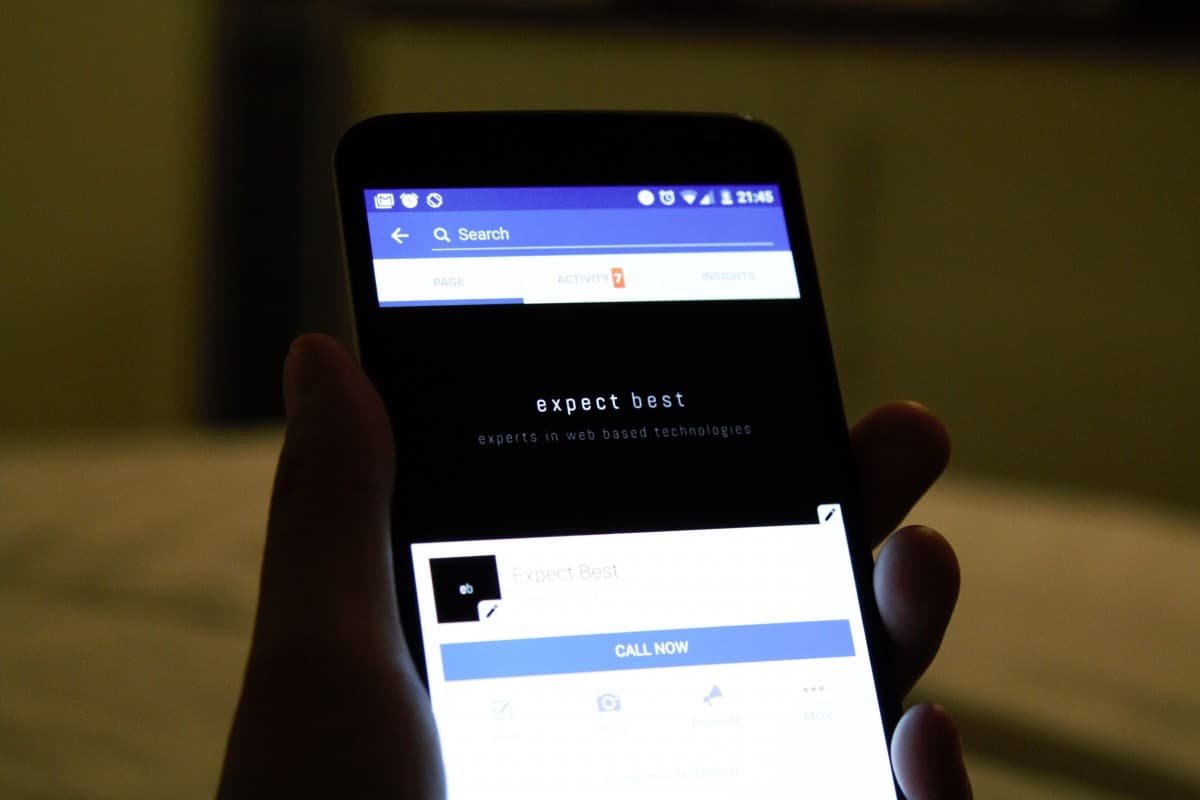
Your copywriter(s) should enter the caption accompanying the post when it goes up so your social media team can copy + paste it easily
5) Hashtags

Your social media team should plan out relevant hashtags per post in advance so they can copy + paste it easily
6) Platform

Specify if a post is going up on FB, Instagram, Twitter, LinkedIn, Google Plus, etc., so you can make sure all relevant platforms are receiving sufficient content that is varied (avoid duplicating posts across all platforms because that’s redundant for audiences)
7) Post Timing

Specify which posts should go up at what time based on insights you receive through analytics – this is especially important if you have multiple posts going out on the same day
8) Metrics
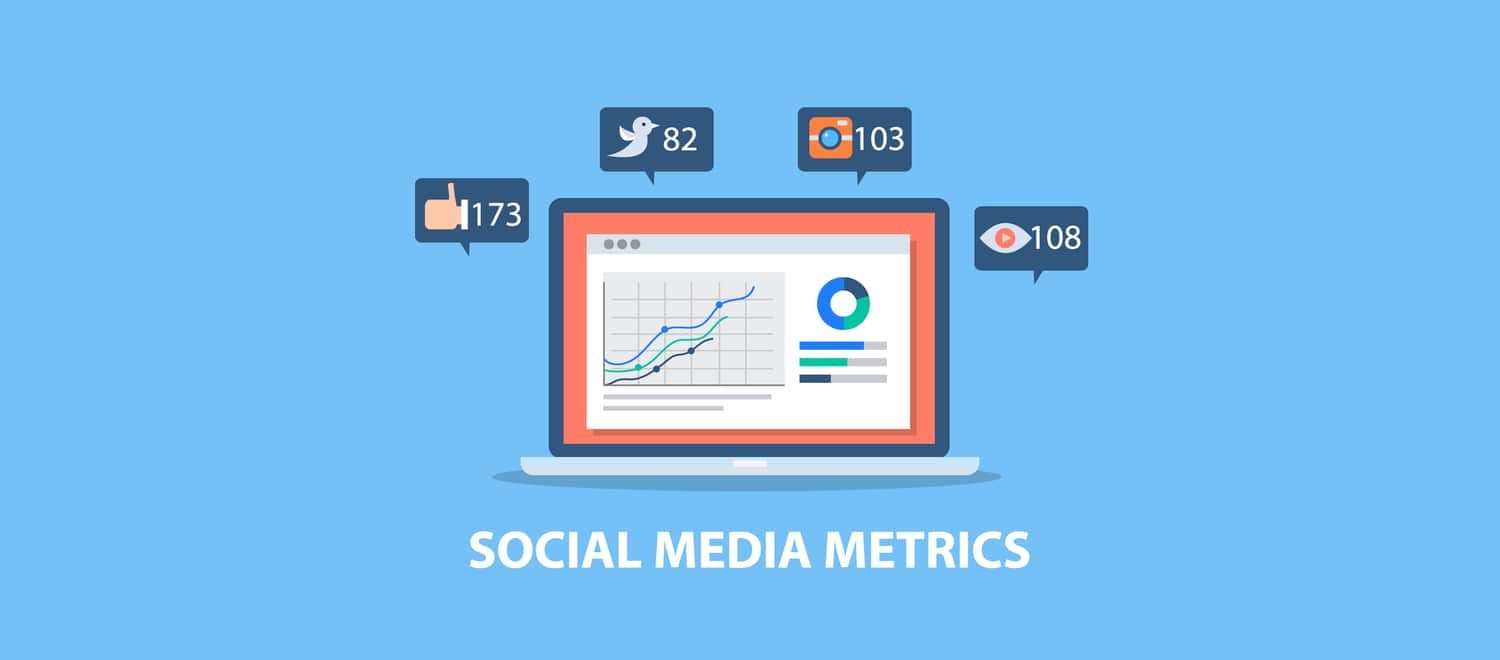
Input the number of likes/shares/comments/reshares each post is drawing to analyze what is / isn’t working
9) Point Person

Indicate point people for different tasks to guarantee accountability in case of errors / delays
10) Boost
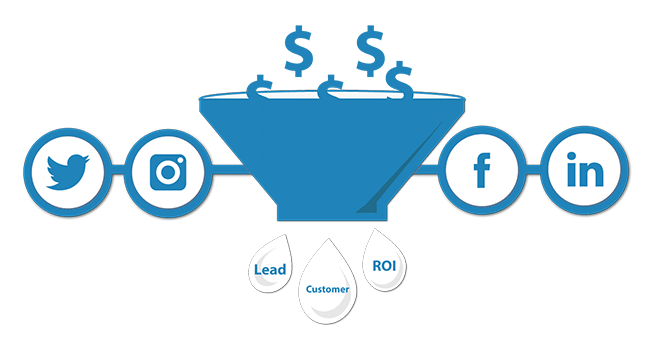
Indicate which posts should be boosted through a paid promotion, and indicate for how much + demographics/filters
11) Images / Videos

Mention where all the files are saved so the social media manager handling your handles has access to everything they need for posts to go live
12) Status

Allow a section for notes regarding status – is the copy ready, is the graphic ready, has the post been scheduled, is the post live?
Pro Tips –
* Mention any special days that should be addressed – i.e. if you run a pizza specialty restaurant, you definitely wouldn’t want to miss National Pizza Day for social media posts and hashtags.
* Make sure you conduct a social media audit using these tips to build the most robust mix of content.
We hope these tips help you stay organized on all your social media initiatives so nothing slips through the cracks, which is a risk when operating with a haphazard workflow system. Do the due diligence of putting everything into a documented file all relevant parties can access in real-time and update!
Need help with social media content creation and planning? Contact Kiss Doodles right here.
Sources –
> https://blog.hootsuite.com/how-to-create-a-social-media-content-calendar/
> www.hatchbuck.com/blog/monthly-social-media-calendar/
> https://coschedule.com/blog/annual-social-media-content-calendar/






